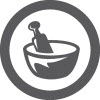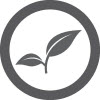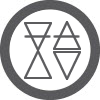The 2020 Patents for Humanity awards recognize six recipients and two honorable mentions. An awards ceremony honoring the award winners premiered Thursday, September 17, 2020 on USPTO's Facebook page.
Watch a recording of the event.
 Medicine
Medicine
Global Vision 2020: USee Vision Kit
USee Vision Kit™ provides prescription eyeglasses in a cost effective way to hundreds of people who normally lack access to vision care, particularly in remote parts of the world.
Sisu Global: Hemafuse
Hemafuse is a highly effective, mechanical alternative to transfusing donor blood. With a simple push and pull of a handle, Hemafuse can salvage, filter, and recycle blood from internal bleeding, without the use of electricity.
Sanaria: PfSPZ Malaria Vaccine
Sanaria developed a whole parasite vaccine for Malaria with an effectiveness rate exceeding that of most Malaria vaccines developed in recent years.
 Sanitation
Sanitation
Flexcrevator
The Flexcrevator surpasses manual emptying by enabling fast, safe, and hygienic fecal sludge removal.
NEWgenerator
Utilizing state-of-the-art membrane bioreactor technology, the NEWgenerator can simultaneously recover nutrients, energy, and water from wastewater.
 Living Standards
Living Standards
Nonspec
Nonspec provides affordable and highly adjustable prosthetic limb systems that can be taken off the shelf and adjusted in under an hour for amputees in need.
Honorable Mentions
Rubitection Inc. for a medical device used for the early detection of bed sores, improving quality of care, and quality of life for patients.
- Warming Indicator by Lawrence Berkeley National Laboratory for a low-cost, convenient, re-usable and non-electric infant warmer that maintains a temperature of 37C (average human core temperature) for approximately six hours. It can be used when a mother is not available for skin-to-skin care, until her infant is mature enough to maintain a stable, normal body temperature.
Learn more about the 2020 winners
Global Vision 2020: USee Vision Kit
Poor vision affects every aspect of a sufferer’s life. Whether reading the chalkboard in the classroom, seeing the cars on the road, or threading the needle in a factory, people who have poor vision are greatly disadvantaged. In fact, the world’s largest unmet disability is poor vision. 2.5 billion people lack access to optometrists. In the developing world, screening is cumbersome and mostly a trial and error process; distribution of refurbished or ready-made prescription eyeglasses rarely results in 20/20 vision in both eyes, and participants often choose fashion over function. The founder of Global Vision 2020, J. Kevin White—U.S. Marine (Ret.) and Naval Academy graduate—was determined to help end the world’s epidemic of poor vision. He invented the innovative USee Vision Kit™ to provide prescription eyeglasses to people in the most remote areas on earth. Global Vision 2020’s system is lightweight. The training is simple and straightforward. The device works by putting the USee™ device on the subjects, who look at the eye chart a few feet away, and then dial through the lens bar until they see clearly. The color and number on the lens bar corresponds with a lens in the kit. The glasses are then “snapped” together by a trained refractionist. Clear sight can be provided in only minutes. Global Vision’s partners have delivered 50,000 pairs of prescription eyeglasses in 48 countries around the world.
Sisu Global: Hemafuse
Blood is a precious resource in healthcare and chronic blood donor shortages have been seen across the world. Hemafuse was created to serve patients with internal bleeding resulting from trauma, ruptured ectopic pregnancies, or for use in planned surgeries. Hemafuse can be used in cases where there is no donor blood available, and even as the preferred option over donor blood. Autotransfusion reduces the risk of infection and disease transmission because using a patient’s own blood is safer than using someone else’s donated blood. Using Hemafuse to recycle a patient’s own blood also saves the donor blood for patients who are not candidates for autotransfusion. With a simple push and pull of a handle, Hemafuse can salvage, filter, and recycle blood from internal bleeding, without the use of electricity. Hemafuse ultimately increases blood access, cuts down on costs and the time it takes to save patients, and reduces their recovery time. Hemafuse is being used in hospitals in Kenya and Ghana.
Sanaria: PfSPZ Malaria Vaccine
Nearly half the world's population lives in areas at risk of malaria transmission in 91 countries and territories. Despite an annual investment of $3 billion to $4 billion in malaria control efforts, annual malaria deaths (approximately 500,000) and cases (approximately 220 million) have remained stable over the last four years. More than 90% of deaths are caused by the parasite Plasmodium falciparum (Pf). Vaccines are the most efficient and cost-effective medical tool for preventing an infectious disease. There are many vaccines to prevent diseases caused by viruses and bacteria. However, there is no vaccine with marketing authorization from any regulatory agency in the world to prevent a disease caused by a human parasite such as Pf. Sanaria® PfSPZ Vaccine, composed of live attenuated Pf sporozoites (SPZ), is intended to have a dramatic effect on the prevention and elimination of malaria. As of August 2020, more than 35 clinical trials of PfSPZ-based products have been conducted at five sites in the U.S., and in five European and in seven African countries. PfSPZ vaccines have shown 92-100% protection against controlled human malaria infection (CHMI) in six clinical trials in the U.S., Germany, Mali, and Tanzania. Protection against natural infection in the field has been demonstrated in four clinical trials in Mali and Burkina Faso. The vaccine has been shown to be safe and well tolerated in more than 450 infants and children in Tanzania, Kenya, and Equatorial Guinea. Initiation of Phase 3 clinical trials was delayed due to the COVID-19 outbreak, but are planned to begin in 2021.
Flexcrevator
Team lead by Dr. Francis L. de los Reyes III, Ph.D. from North Carolina State University
Pit latrines receive an estimated 0.6 billion kg of feces and 2.1 billion kg of urine from 1.77 billion people around the world every day. These latrines fill quickly with rags, plastic bags, bottles, and hair. When there's no room in the pit, fecal sludge must be removed before transport and treatment. While mechanized ways to extract fecal sludge such as vacuum trucks exist, these devices are expensive and clog from high volumes of garbage. Trash often forces people to empty pits by hand with rudimentary tools like buckets and shovels. This dangerous job exposes workers to a host of human pathogens. The Flexcrevator surpasses manual emptying by enabling fast, safe, and hygienic fecal sludge removal. The machine has two components: the Portable Vacuum System pumps sludge from the pit and into storage barrels; and the Trash Excluder which uses a unique, rotating head that prevents trash from entering the machine. The result is smooth, trash-free sludge ready to be transported off-site for safe disposal. By creating a mechanized way to efficiently remove pit latrine waste, they elevate the profession of pit emptying. The Flexcrevator has been tested in South Africa, Malawi, India, Zambia, and Kenya.
NEWgenerator Resource Recovery Machine
Dr. Daniel Yeh and his team at the University of South Florida
The conventional means of providing sanitation service in the U.S. is through an extensive sewer network coupled with a centralized wastewater treatment plant. While the approach has been largely successful in protecting human and ecological health, it comes at a great cost of capital, energy, clean water, and infrastructure maintenance. Today, about 40% of the world’s population, mostly in the developing world, continues to lack adequate sanitation. Tragically, every few seconds a child dies from a water-borne disease such as dysentery or cholera. For many communities in the developing countries, especially dense urban slums, the traditional U.S. approach to sanitation is not feasible due to constraints in infrastructure, land, resources, and finance. The NEWgenerator addresses these important problems. This machine recovers nutrient fertilizer, renewable energy, and clean water from human wastes, without relying on sewers. Housed in a mini-container, the NEWgenerator is a compact, modular, decentralized approach to treating wastewater on a neighborhood scale using a net energy surplus anaerobic membrane bioreactor (AnMBR) to extract methane from the organic waste. Coupled with an ultrafiltration membrane which removes all pathogens (parasitic worms, bacteria and viruses), the system operates entirely off the grid on solar energy. Utilizing state-of-the-art membrane bioreactor technology, the NEWgenerator can simultaneously recover nutrients (such as Nitrogen, Phosphorus and Potassium (NPK)), energy, and water from wastewater. These resources are then used for urban agriculture (in a hydroponic system), thereby closing the loop to meet another dire urban need in local food production. This machine has been successfully demonstrated in trials in Kerala, India and Durban, South Africa. The inventors aim to utilize NEWgenerator on islands and coastal communities to form water/sanitation micro-grids powered by renewable energy which are more resilient to storms and disasters, as well as in refugee camps. To enable broad access to those in need, the technology has been licensed to commercial partners worldwide, including India and South Africa.
Nonspec
Globally, there are over 54 million amputees worldwide, with millions more suffering from amputation every year. On average, the wait to receive a prosthetic limb is over 2 years, and most patients will require over a dozen visits for adjustment and alignment. Most amputations occur due to pre-existing conditions and due to this wait, amputees will end up experiencing further complications, and many will be unable to walk again. Nonspec patented an adjustable prosthetic limb that can be taken off the shelf and adjusted in under an hour to any amputee in need. The pylon system allows for sub-millimeter level adjustment for height and gait, allowing for greater physical comfort without compromising fitting speed. By standardizing the components needed for fit, the device is lightweight and responsive, without the associated cost of more expensive devices. It is comfortable enough for all day wear and durable enough to work on the harshest terrains. They launched their first product in India four years ago with great success and have since been working in Rwanda, the Philippines, and with charities in the U.K. Nonspec continues to develop their technology, building new systems to streamline fit, and improve amputee outcomes and comfort.

